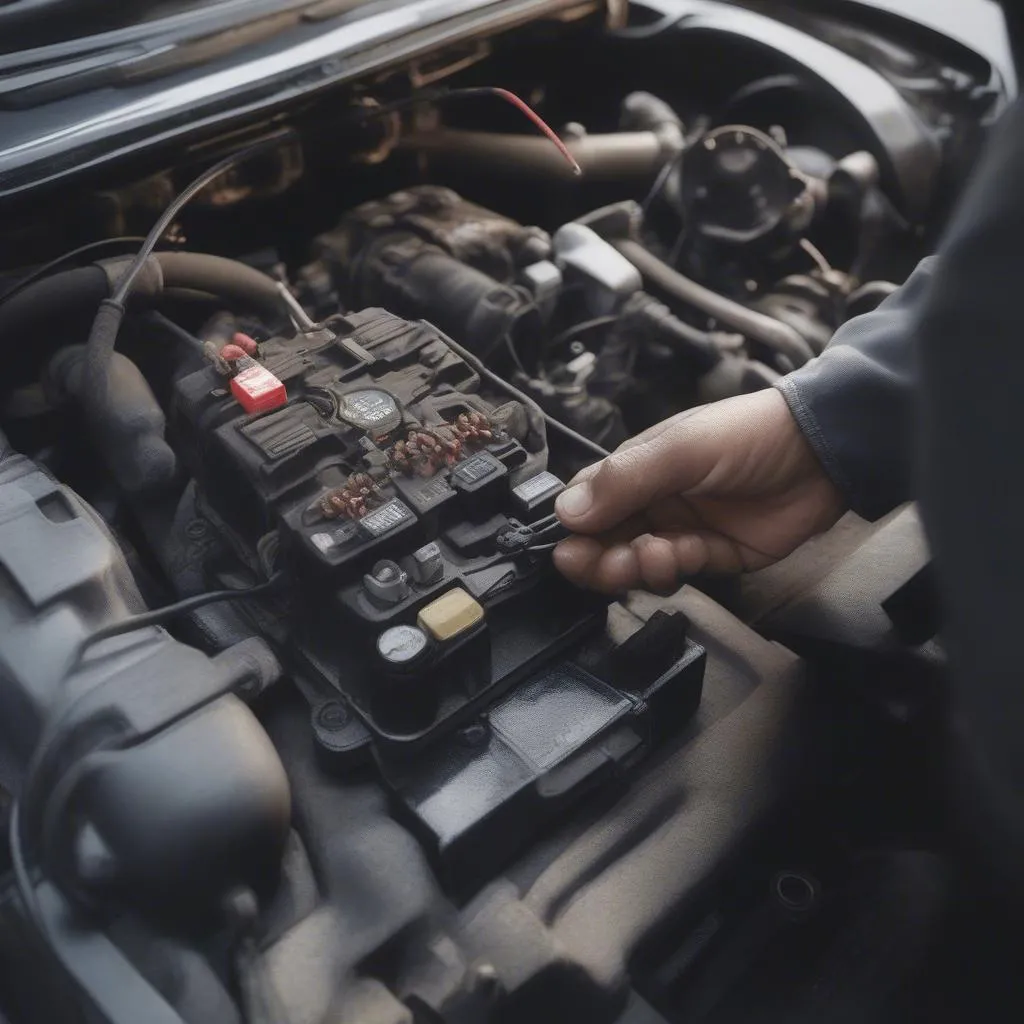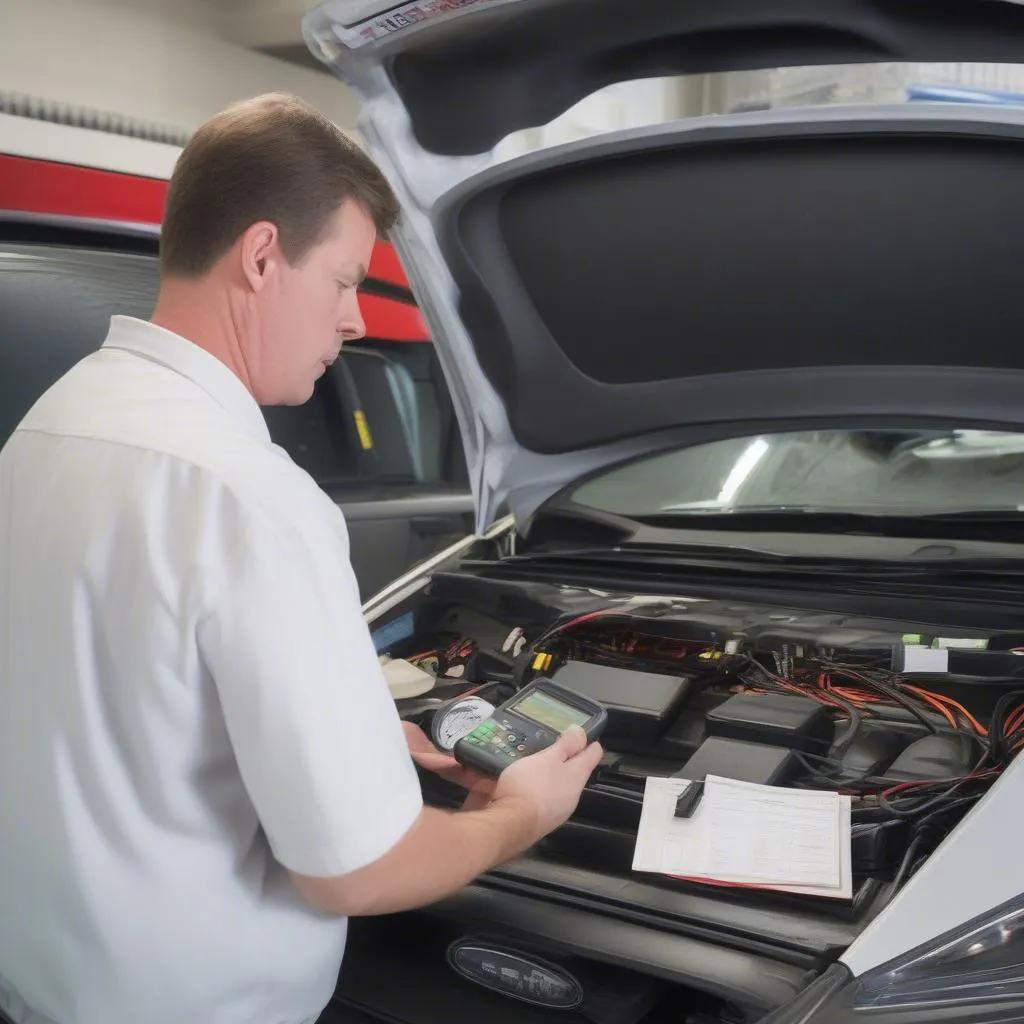Imagine this: you’re rushing to work, the morning sun is shining, and you’re ready to conquer the day. You hop into your car, turn the key, and… nothing. No click, no sound, just silence. The dreaded “when I turn the key nothing happens no click” problem has struck, leaving you stranded and perplexed.
This common issue can be caused by a variety of factors, from a simple dead battery to more complex electrical problems. But don’t despair! We’ll guide you through understanding the problem, diagnosing the potential culprits, and hopefully getting your car back on the road in no time.
Understanding The Problem:
From a Mechanic’s Perspective:
A mechanic understands that when you turn the key, you’re initiating a complex sequence of electrical events. The ignition switch sends power to the starter relay, which in turn activates the starter motor. This motor then engages the engine, turning it over and hopefully leading to combustion.
From a Technical Perspective:
The “no click” symptom typically indicates a problem with the starter relay or the starter motor itself. The relay acts as a switch, connecting the battery to the starter motor. If the relay is faulty, it won’t send the necessary power to the starter, resulting in no click. A faulty starter motor, on the other hand, might not be able to engage the engine even if it’s receiving power.
From an Economic Perspective:
This issue can be a costly one. Replacing a starter motor can be expensive, especially for luxury cars. However, if the problem is a simple dead battery, the solution is relatively inexpensive.
Diagnosing The Issue:
Step 1: Check the Battery
The first and easiest thing to check is the battery. A dead battery won’t provide enough power to activate the starter, resulting in the “no click” symptom. You can test the battery using a voltmeter or by jumping it with another car.
Step 2: Inspect the Battery Cables
Make sure the battery cables are securely connected to the battery terminals. Corrosion or loose connections can hinder the flow of electricity.
Step 3: Check the Starter Relay
The starter relay is a small electrical component that controls the flow of power to the starter motor. A faulty relay can prevent the starter motor from engaging. You can test the relay using a multimeter or by swapping it with a known working relay.
Step 4: Inspect the Starter Motor
If the battery, cables, and relay are all in good working order, the problem might be with the starter motor itself. You can test the starter motor by using a jumper cable to directly connect the battery to the starter terminal. If the starter motor engages, the problem is most likely with the relay or wiring.
Common Scenarios:
Dead Battery
You can quickly determine if your battery is the culprit by trying to jump-start your car. If the engine starts after a jump, you have a weak or dead battery that needs replacement.
Faulty Starter Relay
In some cases, the starter relay might be faulty. A clicking noise when you turn the key can indicate that the relay is trying to engage but failing.
Faulty Starter Motor
If there’s no click at all and your battery is charged, a faulty starter motor is a likely culprit.
Faulty Ignition Switch
A faulty ignition switch can prevent power from reaching the starter relay, preventing the starter motor from engaging.
Troubleshooting Tips:
Check the Battery’s Terminals
Corrosion on battery terminals is a common cause of starting problems. Clean the terminals with a wire brush and apply a battery terminal protector to prevent future corrosion.
Verify Electrical Connections
Ensure all electrical connections to the starter relay, ignition switch, and starter motor are tight and secure. Loose connections can cause resistance and prevent the flow of electricity.
Use a Diagnostic Scanner
For more complex electrical issues, a diagnostic scanner can help pinpoint the problem. A scanner can read the car’s computer system and identify any error codes that might be related to the starting problem.
Seeking Expert Help:
If you’re not comfortable diagnosing or troubleshooting electrical problems yourself, consult a qualified mechanic. They have the tools and expertise to accurately diagnose and fix the issue.
Related Questions:
- What are the common causes of a car not starting?
- How do I jump-start a car?
- How do I test a car battery?
- How do I replace a car battery?
- How do I test a starter relay?
- How do I replace a starter motor?
Further Exploration:
Need Help?
Don’t hesitate to reach out to our expert technicians via Whatsapp: +84767531508 for assistance. We offer 24/7 support for diagnosing and repairing any automotive electrical issues, including “no click” problems.
Conclusion:
The “when I turn the key nothing happens no click” problem can be frustrating, but it’s often fixable. By systematically checking the battery, cables, starter relay, and starter motor, you can identify and resolve the issue. Remember, if you’re unsure about any of the steps, always consult a qualified mechanic.
Have you encountered this problem before? Share your experience and any helpful tips in the comments below!
 Battery Testing
Battery Testing
 Starter Relay Inspection
Starter Relay Inspection
 Car Diagnostics
Car Diagnostics